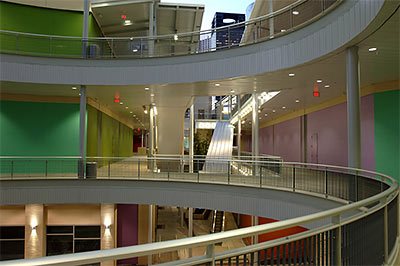
Houston’s Downtown office district, writes Christof Spieler in the RDA’s OffCite blog, “wraps around Pavilions on two sides. It ought to be delivering swarms of office workers to restaurants and the book store. But at lunchtime on weekdays, Pavilions seems empty compared to the streets a few blocks away. What’s wrong?”
In Cite, the blog’s paper-bound cousin, Max Page wishes all the stores in Houston Pavilions had simply faced the street, and that the apartments and condos hadn’t been cut from the project:
Like the residential component, the decision about whether to orient the project to the existing street grid, or turn away, was made in the wrong direction. [Architect Roger] Soto laments the choice. “We had some compelling ideas about activating the street,†he told me. “But in the end, the developer chose to attach retail stores to a ‘central spine,’†perhaps because that approach created a scheme that more closely resembled the traditional covered malls [Developer William] Denton had spent years developing.
How about the action along that central spine?
***
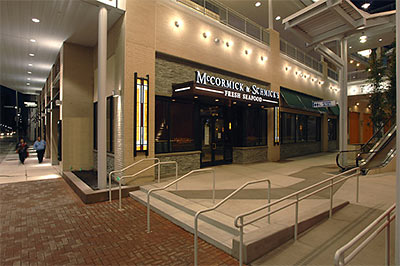
Like those upstairs stores that have already come and gone, it’s a little start and stop:
The flaw in this approach is most powerfully seen as you walk down this central spine and come to one of the major avenues the project crosses. One could either climb up the crude metal staircases to the second floor (incidentally creating an inelegant, useless underside in the middle of the passageway), and then back down; walk to the real street corner and cross at the light; or make a dash for it and hope for the best. True, the circular walkways from one block to the next above the street are the most exciting architectural features of the project, but it undermines the goal of creating a lively street-level walkway.
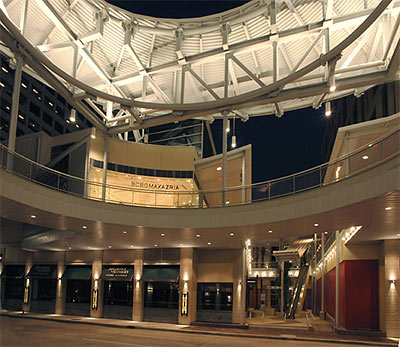
But the slow start isn’t all Houston Pavilions’ fault, Spieler responds. It’s just that everybody else is still a little too far away:
Well, obviously, the empty storefronts (Pavilions is less than a quarter occupied) don’t help. Beyond that, though, there’s a gap. The big office buildings are a block north and a block west of Pavilions, and the blocks in between have little activity. One dead block can turn off a pedestrian easily. The problem is compounded by the Pavilions’ north side, which, unlike the plaza on Main, is closed off and unwelcoming, especially from a distance. And then there’s the inconvenient truth of Downtown: much of the lunchtime activity is underground. With a tunnel connection, Pavilions could easily draw lunchtime crowds, like the food court in Park Shops (another urban mall) does. But the tunnel connection was deleted, along with Pavilions’ residential and underground parking, before construction began.
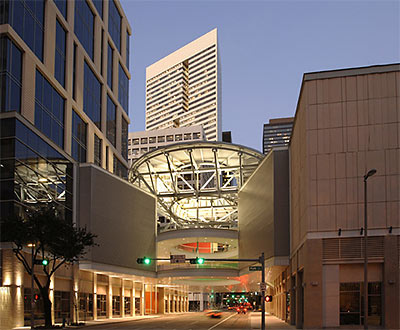
- Houston Pavilions: Mind the Gaps [OffCite]
- Downtown’s Downtown? (PDF) [Cite]
- Houston Pavilions: Lucky Strike Out, Hats Off, Shoes Back in Boxes [Swamplot]
- Houston Pavilions: Woulda Coulda Shoulda [Swamplot]
Photos: Houston Pavilions



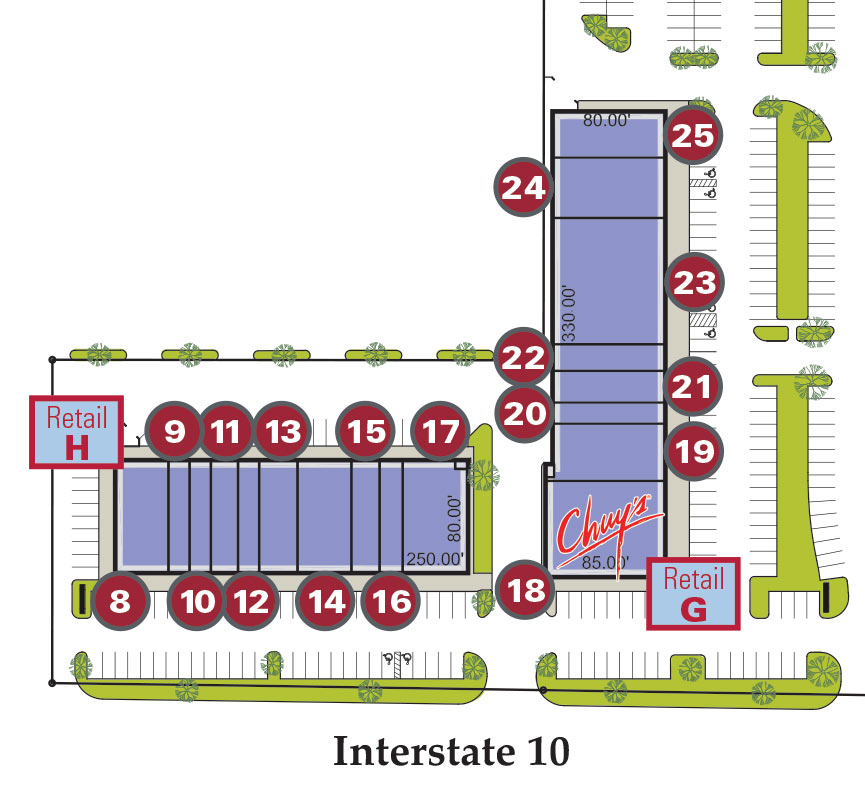

More news:
all of the stores on the 3rd floor are now moving to the first over the next few months to consolidate and allow for semblance of a shopping experience instead of a weird clockwork orange emptyness.
I don’t know who made the decision not to be connected to the tunnel system, or why, but it doesn’t seem like the best decision given the realities of downtown.
The developers of the Houston Pavilions were visionary. Give the project time & it will be a hotspot. There is a good line-up of tenants. Patience my friends!
James
the skywalks of the houston pavilions are truly beautiful. a development that delivers some true public art to our city has my best wishes for major success.
Is the Houston Pavilions in the same place where the Park Shops used to be (or are)? Google Maps puts them in the same place. Park Shops at Houston Center still has a website that looks active.
No, the Houston Pavilions are a couple blocks to the south, bounded by Main, Dallas, Caroline, and Polk Streets.
Interesting that there is a post here from 2009 saying give them time. It is 2013 and the pavilions are still dead midday midweek. It was shortsighted of the developers to not connect to the tunnel system where most of the foot traffic in downtown Houston is focused 8 months of the year.